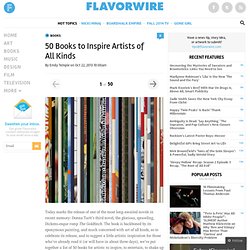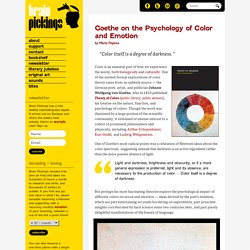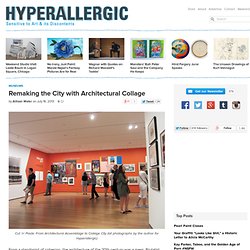

Kehinde Wiley Puts a Classical Spin on His Contemporary Subjects. Kehinde Wiley began thinking about the stereotypes that shadow black men long before events in Ferguson, Mo., pushed the phrase “unarmed black man” back into the headlines and inaugurated a new wave of the civil rights movement.

“I know how young black men are seen,” he said on a recent winter afternoon in his studio in the Williamsburg section of Brooklyn. “They’re boys, scared little boys oftentimes. I was one of them. I was completely afraid of the Los Angeles Police Department.” He grew up in South-Central Los Angeles and was 14 when four white police officers were acquitted in the videotaped beating of Rodney King; riots flared in the neighborhood. Now 37, Mr. Photo At the moment, Mr. A Wiley painting is easy to recognize. Every Wiley painting is a two-punch affair — the masculine figures contrast sharply with the ornately patterned, Skittles-bright backdrops unfurling behind them.
Mr. But you can also read his work in psychological terms, and Mr. Mr. Before meeting Mr. Mr. Mr. Mr. 50 Books to Inspire Artists of All Kinds. Today marks the release of one of the most long-awaited novels in recent memory: Donna Tartt’s third novel, the glorious, sprawling, Dickens-esque romp The Goldfinch.

The book is backboned by its eponymous painting, and much concerned with art of all kinds, so to celebrate its release, and to suggest a little artistic inspiration for those who’ve already read it (or will have in about three days), we’ve put together a list of 50 books for artists: to inspire, to entertain, to shake up the system. Some of these books are about visual art, some are visual art in themselves, some just strike us as the kind of thing that might keep an artist up at night. Pigment catalog. Dance of the Weird Uncles. Google. © 2021 - Privacy - Terms.

Goethe on the Psychology of Color and Emotion. Color is an essential part of how we experience the world, both biologically and culturally.

One of the earliest formal explorations of color theory came from an unlikely source — the German poet, artist, and politician Johann Wolfgang von Goethe, who in 1810 published Theory of Colors (public library; public domain), his treatise on the nature, function, and psychology of colors. Though the work was dismissed by a large portion of the scientific community, it remained of intense interest to a cohort of prominent philosophers and physicists, including Arthur Schopenhauer, Kurt Gödel, and Ludwig Wittgenstein.
One of Goethe’s most radical points was a refutation of Newton’s ideas about the color spectrum, suggesting instead that darkness is an active ingredient rather than the mere passive absence of light. YELLOWThis is the color nearest the light. It appears on the slightest mitigation of light, whether by semi-transparent mediums or faint reflection from white surfaces. Robert Hughes - *The Mona Lisa Curse. Kandinsky on the Spiritual Element in Art and the Three Responsibilities of Artists. By Maria Popova “To harmonize the whole is the task of art.”

“Art is a form of nourishment (of consciousness, the spirit),” 31-year-old Susan Sontag wrote in her diary in 1964. “Art holds out the promise of inner wholeness,” wrote Alain de Botton half a century later in the excellent Art as Therapy. But perhaps the greatest meditation on how art serves the soul came more than a century earlier, in 1910, when legendary Russian painter and art theorist Wassily Kandinsky published Concerning the Spiritual in Art (free download; public library) — an exploration of the deepest and most authentic motives for making art, the “internal necessity” that impels artists to create as a spiritual impulse and audiences to admire art as a spiritual hunger. Kandinsky’s words, penned in the period between the Industrial Revolution and the rise of the consumer society, ring with remarkable poignancy today.
[In great art] the spectator does feel a corresponding thrill in himself. He later adds: Alice Aycock Drawings - Fineberg, Jonathan; Sultan, Terrie. Remaking the City with Architectural Collage. Cut ’n’ Paste: From Architectural Assemblage to Collage City (all photographs by the author for Hyperallergic) From a standpoint of cohesion, the architecture of the 20th century was a mess.

Brutalist monoliths were constructed alongside shimmering aluminum waves, while some architects clung to scraps of classicism like life preservers in a swelling sea of modernism. However, it was this mishmash of styles and ideas that resulted in some of the most visionary designs, and not surprisingly the use of collage became a central medium for experimentation. Yet collage as an architectural tool isn’t something that’s widely looked at, which is why the Cut ’n’ Paste: From Architectural Assemblage to Collage City exhibition that opened earlier this month at MoMA is interesting. It’s a relatively small exhibition, just taking over two rooms, especially compared to the gargantuan Le Corbusier career survey happening up above.
O.M.A. The Animated Life of A. R. Wallace - Video. Mona Lisa Descending a Staircase. Kandinsky on the Spiritual Element in Art and the Three Responsibilities of Artists.